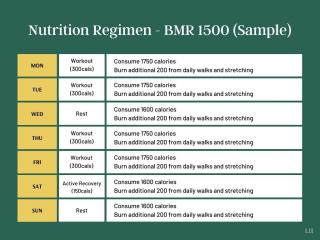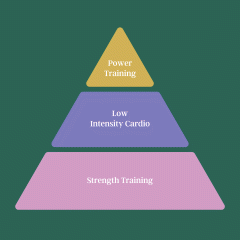Go to business school, and you’ll hear it over and over again: What gets measured gets managed. Often attributed to Peter Drucker, this maxim also applies to time management. The best way to improve your time management is to log your daily activities. Simply seeing how your time is spent empowers you to be more productive.
Before you begin recording your daily activities, you have two choices to make—where to do it and how to do it. Let’s discuss them both.
Where to Log Your Daily Activities
Generally speaking, you have two options for logging your daily activities: physically or digitally. Although there’s no “right” answer, there are reasons why people choose one over the other.
Digital Logging
For a few reasons, many people prefer to log their tasks in a calendar or productivity software:
1. Accessibility
Who wants to carry a planner everywhere they go? Digital tracking tools can be accessed from your phone, which is probably in your pocket from when you wake up to when you hit the hay. They can also be pulled up on your computer, where you’ll analyze the data.
2. Customizability
Do you like to view your tasks as a calendar or a list? Do you like to categorize them by type, participant, timeline, or something else? Do you color-code them? Digital activity logging tools put you in the driver’s seat. If you change your mind about a layout or color choice, you can always adjust it later.
3. Cost
Have you priced planners recently? A nice, hardback one can cost you a pretty penny. If you go this route, don’t buy online.
“One of the best things you can do is go out to a store and touch the planner, feel it and really look at it,” explains Jackie Reeve, who writes for The New York Times’ Wirecutter project. Most digital tracking tools are free. Some offer paid versions with more features, but even these are competitive with bound paper planners.
Still, not everyone uses software to log their daily activities. So, what do the paper-planner folks like about them?
Physical Logging
Just as some people prefer print books to e-books, some would rather log their daily activities on paper. This option has a few advantages.
1. Memorization
Research suggests that writing things down helps us commit them to memory. If you’re trying to memorize a new routine, a paper activity planner might be your best bet.
2. Privacy
Although software companies spend a lot on data security, the reality is that breaches happen. If you worry about your schedule or activities leaking out to the wrong person, a paper planner could be the right choice.
Remember that paper logging puts more of the responsibility on your shoulders. Nobody is going to read your activity log if you keep it in a safe deposit box. But at the same time, how are you going to access it?
3. Visibility
To access your digital activity tracker, you need to think about it, pull up the app on your phone or computer, and log in. If you post a paper log in the right place, all you need to do is take a glance at it.
This is why many business professionals still keep a paper calendar on their desk, despite also maintaining a digital one. Nothing jogs the mind like a visual reminder.
Once you’ve decided where to put your activity data, you need to actually log and analyze it. Practice by clocking how long it takes you to review my six tips for doing so.
How to Track Your Daily Activities
Some activities are easier to log than others. Digital ones, like videoconferences, might already be on your calendar by virtue of the invite you sent out. Others, like that wilderness hike you took on a whim, may require some planning and estimation.
Here’s where to start:
1. Check Your Calendar
Does what’s on your calendar match how you actually spend your time and how you want to be spending your time? It should, says Breakout Blueprint author Doug Foley—“If you learn to own your calendar instead of letting it own you, that’s the first step to building the life you want.”
If it doesn’t, clean up your calendar. Remove activities and events that are no longer relevant. Say “no” to things you don’t want or can’t do. Fill those slots with activities that get you closer to your goals.
2. Use a Time Tracker
To track digital activities, use activity tracking tools like Toggl or Harvest. They can pull event details from your calendar and prompt you to log the amount of time you actually spent on each activity.
These tools are easiest to use with a widget, a miniaturized version of a program that displays only its essential tools. Time-tracking widgets let you start, pause, and stop the activity timer as you work.
If you’d prefer to use a physical activity log, get a stopwatch. Your phone has one built-in, or you can carry one on in your pocket if you prefer the track-coach experience. Either way, remembering to press “start” and “stop” after each activity takes practice. Expect to spend about two weeks building the habit.
3. Get Time Bounds Down to the Minute
When tracking your time, it’s easy to round. Perhaps you forget to click “start” on the timer, so you call it 3:25 p.m. instead of 3:23 p.m. Maybe your log from yesterday has a gap at 4 p.m., so you assume that you started the next task listed then.
While that might not seem like a big deal, think about how it skews your activity log. Not only is your time for that task now inaccurate, but it may also cause you to shift the start or end times for tasks adjacent to it.
Sloppy logging becomes an even bigger issue when you need to analyze how you’re spending your time. If every five-minute “review email” task is off by two minutes, your analysis may lead you to believe that you’re spending barely half as much time in your email as you actually are.
4. Take Notes
Was your son or daughter distracting you while you were finishing up that proposal email? No wonder it took twice as long as the previous ones. Make note of the reason why in your activity log.
If you go the paper route, don’t do this in pen. Rarely does a day go by that I don’t make some sort of correction to my planner (more on that in a moment). Digital trackers allow you to not just attach notes to each activity, but update them as you wish.
When it comes to logging your time, the “why” matters just as much as the “when” and “how long.” You need to know why certain tasks took more or less time than expected if you want to become a better time manager.
5. Ask for Corrections
No matter how meticulous you are, everyone makes mistakes. If you’re logging a group activity—whether it’s a marketing campaign at work or cooking dinner at home—ask others in the group to periodically check your activity log.
Chances are good your time log will differ slightly from that of your partners. What’s important isn’t whose time is right, but identifying the types of tasks where discrepancies are common. Tasks that aren’t being logged correctly can’t be analyzed or acted on with confidence.
6. Back It Up
How good is your memory? Could you recite the last month of your activity log if it were lost or stolen? Probably not.
If you use a paper activity tracker, take a photo of it each week. Upload the photos to a cloud storage solution like Google Drive. If you use a digital one, back up your activity log on a local storage device. You never know when the company behind your tracker is going to go bust.
7. Dig Into the Data
Once you have a month or more of activity data—and are confident it’s logged correctly—the fun begins. You can make better use of your time by analyzing how you’ve been spending it.
How you slice the data depends on what you want to do with it. Maybe all you need is a billable hours figure at the end of each month. That’s easy—just add up all the activities you did on behalf of your clients in the past four weeks.
Using your activity log to improve your personal life requires you to think about your interests and ideals. Does your morning routine consistently leave you enough time to eat breakfast? If not, you might need to start waking up earlier. Is your salaried job forcing you to work well beyond 40 hours per week? Then, it might be time to start looking for a new one.
Do More, Do Better
Your routine might not seem like anything special. But if you log your daily activities, you’ll see that you do a lot each day.
To better manage your time—either by cutting out unnecessary tasks or completing your existing ones more efficiently—you need to track your time. Opportunities for optimization are there—you just have to get started in identifying them.
More Tips on How to Manage Your Time Better
Featured photo credit: Paico Oficial via unsplash.com





























































